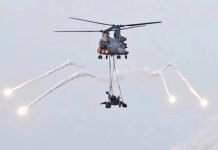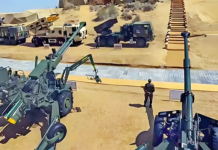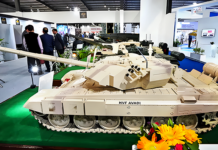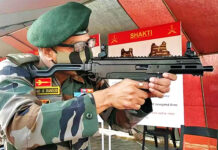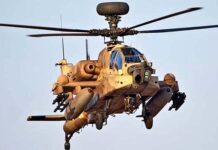Multi-domain war fighting requires knowledge of what is happening in various domains affecting the operational situation. Hence, a multi-domain connect is necessary if integration and exploitation of information from multiple sources, including sensors, databases, intelligence, reconnaissance, and surveillance is required to formulate an integrated response.
A well-supported network is required for integrated cooperation that can share information and data across all domains. Using dual-use satellites to create a secure information network is one possibility.
As per the US Army’s perspective on MDO, no service can conduct multi-domain operations alone. The conduct of operations by a joint force or anything resembling multi-domain operations is challenging since it is dependent upon common understanding of the situational awareness amongst Services. The US military is still coming to grips with its efforts to raise MDO into joint all domain operations.
IAF and MDO
The IAF does not already have in place its integrated air defence system (IADS) where the most dominant sensor, i.e., the airborne warning and control system (AWACS) is intermeshed with airborne and land-based radar networks. The meaningful IADS would need to be extended to other battlefield and shipborne sensors and made more robust with ground-based air defence systems. The combination of manned and unmanned aircraft, surface-to-air missile systems, surface to surface systems, shipborne systems, electronic jammers and cyber systems will have to be, thus, well conceived. For example, SEAD attack could be carried out on the enemy air defence system either by using aerial bombing or cyber-attack on routers, data base, computers or displays or a combination depending on the effects desired. In network centric warfare, the time compression in decision making and consequent force application is pivotal for a winning result.
Leveraging Air Power and Space Domain in MDO.
There is a convergence of the Army and Navy towards leveraging air power in the future conflict. Multiple agencies from air, space, sea and ground sensors are collecting huge data in the battlefield which is the essence of MDO. It entails joint air domain and joint C4ISR. MDO involves multiple forces – surface, marine surface, sub-surface, air, space, missile force, cyber, electro-optical, and various other agencies, including the government. It is for surveillance, battle assessment, command and control, navigation, synchronisation in time and space.
There is a need to have kinetic and non-kinetic anti-satellite capability, space-based laser electronic warfare can also affect air and surface operations. The key to MDO is ambiguity, and the advantage that satellites provide, in influencing the space, which then becomes another battleground.
Land Warfare Doctrine
The Land Warfare Doctrine propagates deterrence by denial, especially against China’s layered defence and offensive capabilities. India’s Land Warfare Doctrine has set out the case for emerging technologies such as AI and directed-energy weapons. These have the potential to be the foundation for India’s efforts to develop MDO and act as a bulwark against A2AD technologies. MDO will also permit Indian defence forces to pursue Indian national security objectives by compensating for any weaknesses in certain domains. This can be done by combining capabilities in others and producing asymmetric returns and avoiding the unnecessary diffusion and scattering of assets.
MDO at Sea
MDO at sea has four domains and three enablers – sea and land , under-sea, and air domain – all battle winning factors. The electromagnetic spectrum, space, and cyber are the three enablers. MDO, as conceived today are fundamental extension of air-land battle. The Navy and Air Force have the air-sea battle, which becomes the joint axis in the manoeuvre. real time networking and command & control are the two main challenges in MDO.
Integration of Networks
An encrypted data link architecture for net-centric warfare across each domain would be best suited tool for such a task. To facilitate information sharing for enhanced situational awareness, such a network system would need to have a high degree of connectivity and take the least time to establish an accurate common operational picture.
There is a need to combine aspects of network-centricity, combat cloud and combined fires to build a connect between sensing and targeting across domains. Also, there is a need to define the grid construct of the sensing, information, effects and command grids, as well as, layer them to receive, process, store and communicate information over the network. In other words, quick and secure exchange of tactical data like pictures, text messages, imagery and digital voice in real time to be used by combatants/platforms /entities in each domain.
For MDO, the Indian armed forces must evolve the conceptual understanding of strategies, operations, communications mechanisms, enabling policies, C2 styles, force as well as support structures.
Integration of Cyber Domain
Integration of the cyber domain into the Armed Forces Joint Doctrine and operational concepts is required to be effective in regular as well as irregular wars in, from and through cyber space. Our enemies will leverage technological advances to blend space and cyber operations as the battlefield acquires a multi-domain complexion. Structuring multi-domain warfare capability through a Net-Centric structure will not be easy and will require defining the roles and responsibilities, nature of information to be exchanged, connectivity and the degree of coupling of capability across domains. Success, as with any new military concept, will depend on the leadership’s commitment to change and to accord a forceful direction to bring disparate Service interests and functional areas (space, air, sea, land and cyber) together to function through a common network.
Enhancing Jointness through MDO
A joint force certainly facilitates cross-domain synergy, but a single service should also have cross-domain capabilities to some extent. In a joint force, cross-domain synergy creates and exploits symmetrical advantages. Indian Armed Forces have embarked on this challenging route recently and much work needs to be done. Our forces need to focus on their core expertise, including focus in the new military domains.
The main challenges which are foreseen in conduct of MDO includes collusion of our adversaries across the complete spectrum, technology driven ISR capabilities to achieve situational awareness, investment in development of disruptive technologies which have changed the character of war and building fully networked joint command & control structures across all domains. To achieve convergence and to overcome the challenges, it is recommended that joint Multi-Domain Task Forces be created to train and build a cohesive force and build capacities & capabilities towards modernisation in achieving cohesion.
Theaterisation: Way Ahead in Achieving Convergence
There is a need to upgrade existing capacity significantly in the newer domains of cyber, space and human cognition as the mastery of traditional domains of land, air and sea no longer suffice. A typical MDO engagement which is enabled by low orbit technologies, a tri-service combat cloud, a cyber strike, a swarm of offensive drones to take on the counter attacking forces? Therefore, mere structure corrections will not be enough but other cognitive corrections are important along the route to jointmanship. There is a need to create a new kind of mindset and HR skills as investment in softer layers of hard power is a reality – faster the better. The key to decision-making in MDO is harnessing disruptive technologies to create a combat cloud with integrated networks. What is also critical are critical for achieving cohesion in MDO is civil-military fusion, inter-agency cross-pollination, strategic partnerships and a whole of nation approach. MDO is not an option but it is a reality that must be adopted
Cohesion through Convergence of a Joint Force in MDO
It is extremely difficult to capture the exact nature of a future war with definite certainty. It could be assumed that the future war will be multi-dimensional and multi -domain wherein our enemies will tend to blend conventional or asymmetric and hybrid capabilities across all domains, thereby compelling us to re-examine existing military concepts and doctrines. There is a need to incorporate the advanced technologies in a command and control system. A multi-domain connection is necessary if one has to integrate and exploit information from multiple sources, including sensors, databases, intelligence, reconnaissance, and surveillance to formulate an integrated response.





